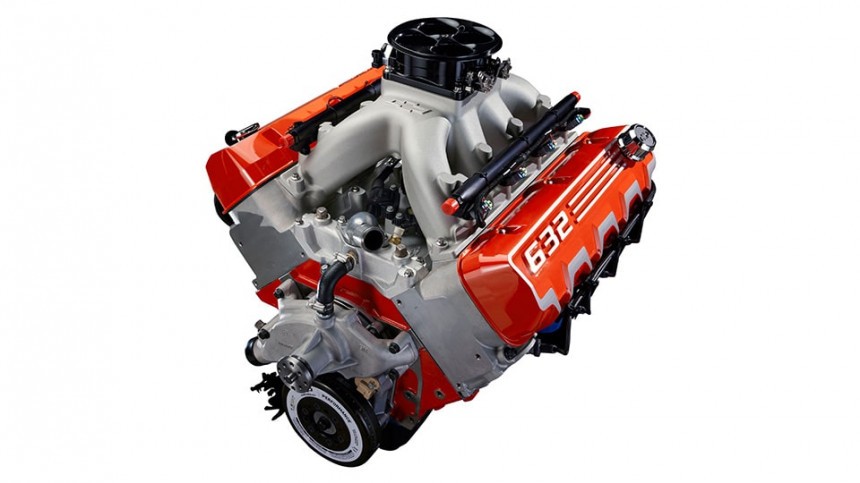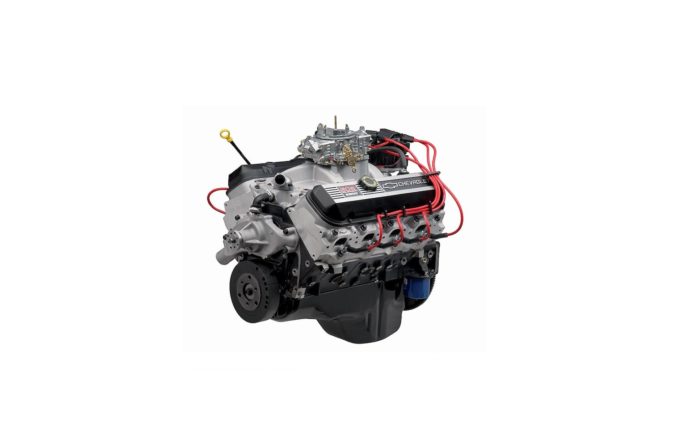Capable of producing massive torque with a proverbial yawn, the long-running big block from Chevy was born purely out of necessity in 1958, a few years after the small block. With cars getting heavier and truck customers requiring more grunt, GM knew that it needed something that would satisfy the needs of its patrons. The biggest of the Big Three no longer offers big blocks in series-production vehicles, but as fate would have it, this iconic design soldiers on in the form of crate engines.
The Mark II is an ultra-rare engine developed specifically for go-faster shenanigans, and the Mark III never left the drawing board even though it was a promising design thanks to bigger bore centers than the Mark II. This brings us to the Mark IV, a massive improvement over the W-series engine. Nicknamed the Rat Motor, this fellow can be considered the genesis of the big-block V8 we know today. Developed to perform better at high engine speeds, the Mark IV is rocking more conventional wedge-shaped combustion chambers, different valve angles, and relocated spark plugs.
Launched in 1965 to great critical acclaim with a displacement of 396 cubes (6.5 liters) as the L78 in the Corvette and L37 in the Chevelle, the quintessential big-block design grew to 402, then 427 and up to 454 cubic inches. The fourth-generation big block was retired in 1995 in favor of the Gen V, which received four-bolt mains and a one-piece rear main seal. The automaker’s move to aluminum valve covers also needs to be mentioned, along with the removal of the mechanical fuel pump boss in favor of TBI.
Produced for half a decade, Gen VI engines came in two flavors. The Vortec 7400, named this way after its metric displacement, was offered in L29 specification for HD trucks and L21 specification for commercial vehicles. Boasting sequential fuel injection and OBD II, these powerplants were succeeded by the Vortec 8100 – codenamed L18. The sole member of the Gen VII features 18-bolt heads, longer conrods, a different firing order (1-8-7-2-6-5-4-3 instead of 1-8-4-3-6-5-7-2), and symmetrical intake ports.
Photo: Chevrolet
History lesson over, now let’s get down to business! The Golden Bowtie currently sells no fewer than 10 crate engines featuring the big-block architecture that continues to fascinate with its low-end twist. Sorted after horsepower instead of torque, Chevrolet’s big-block list kicks off with the HT502. Good for 406 horsepower at 4,200 revolutions per minute and 541 pound-foot (733 Nm) at 3,200 revolutions per minute, the 8.2L “is uniquely suited to pre-1978 trucks” and “adaptable to a variety of applications.”
A bonafide workhorse, the High Torque 502 flaunts a cast-iron block with four-bolt main caps, a forged-steel crankshaft, forged-steel and shot-peened conrods, forged-aluminum pistons, oval-port heads, 118-cc chambers, stamped-steel rocker arms, and a 14-inch flexplate. Capable of 5,500 revolutions per minute, this lump is designed for good ol’ regular gas.
Next up, the 454 HO delivers 438 hp at 5,300 rpm and 500 lb-ft (678 Nm) at 3,500 rpm. Equipped with a hydraulic roller camshaft just like the HT502, this member of the big-block family uses rectangular-port heads and runs the same 8.75:1 compression ratio as the aforementioned 502-ci engine.
The 502 HO fits vehicles like an old-school Chevelle to a newer Suburban, blessing them with 461 hp at 5,100 rpm and 558 lb-ft (757 Nm) at 3,400 rpm. A value-oriented choice that’s much obliged to pull a trailer with the proper transmission, this mill is all things to all big-block enthusiasts. The ZZ454/440 can be summed up as the 454 HO from before, matched with oval-port heads that unlock 31 additional ponies thanks to better airflow.

Photo: Chevrolet
The cylinder heads of the 7.4-liter engine are aluminum rather than iron, and their design increases the compression ratio to 9.6:1. The pistons are interchangeable, bearing the same part number for both applications. If 469 hp at 5,500 rpm and 519 lb-ft (704 Nm) at 3,700 rpm isn’t enough, fret not because Chevy has got you covered with the ZZ427/480 that belts out 480 hp at 6,000 rpm and 490 lb-ft (664 Nm) at 3,800 rpm on premium fuel.
A modern take on the racy L88 of the 1967 model year Chevrolet Corvette, this engine differs in one important way from the original. Rather than a flat-tappet camshaft, we’re dealing with a hydraulic roller camshaft for a broader performance range and slightly better drivability. Aluminum roller-style rocker arms, an HEI-style distributor, a 770-cfm carburetor, and 6,400-rpm redline are highlighted, along with a compression ratio of 10.1:1.
The ZZ502/502 Base and ZZ502/502 Deluxe, which feature strong bottom ends, develop the same 508 hp at 5,200 rpm and 580 lb-ft (786 Nm) at 3,600 rpm. Obviously enough, the Deluxe comes with more stuff than the Base, including an 870-cfm carburetor. What’s better than 8.2 liters? Make that 9.4 in the ZZ572/620 Deluxe and its more aggressive brother, the 720R.
Last, but certainly not least, big daddy ZZ632/1000 is the largest and most potent crate engine in Chevrolet’s long and illustrious history. The 10.35-liter colossus needs 93-octane gas to develop 1,004 hp at 6,600 rpm and 876 lb-ft (1,187 Nm) at 5,600 rpm. Launched in November 2021, the SuperMatic 4L75E-R is a four-speed box developed specifically for this application.

